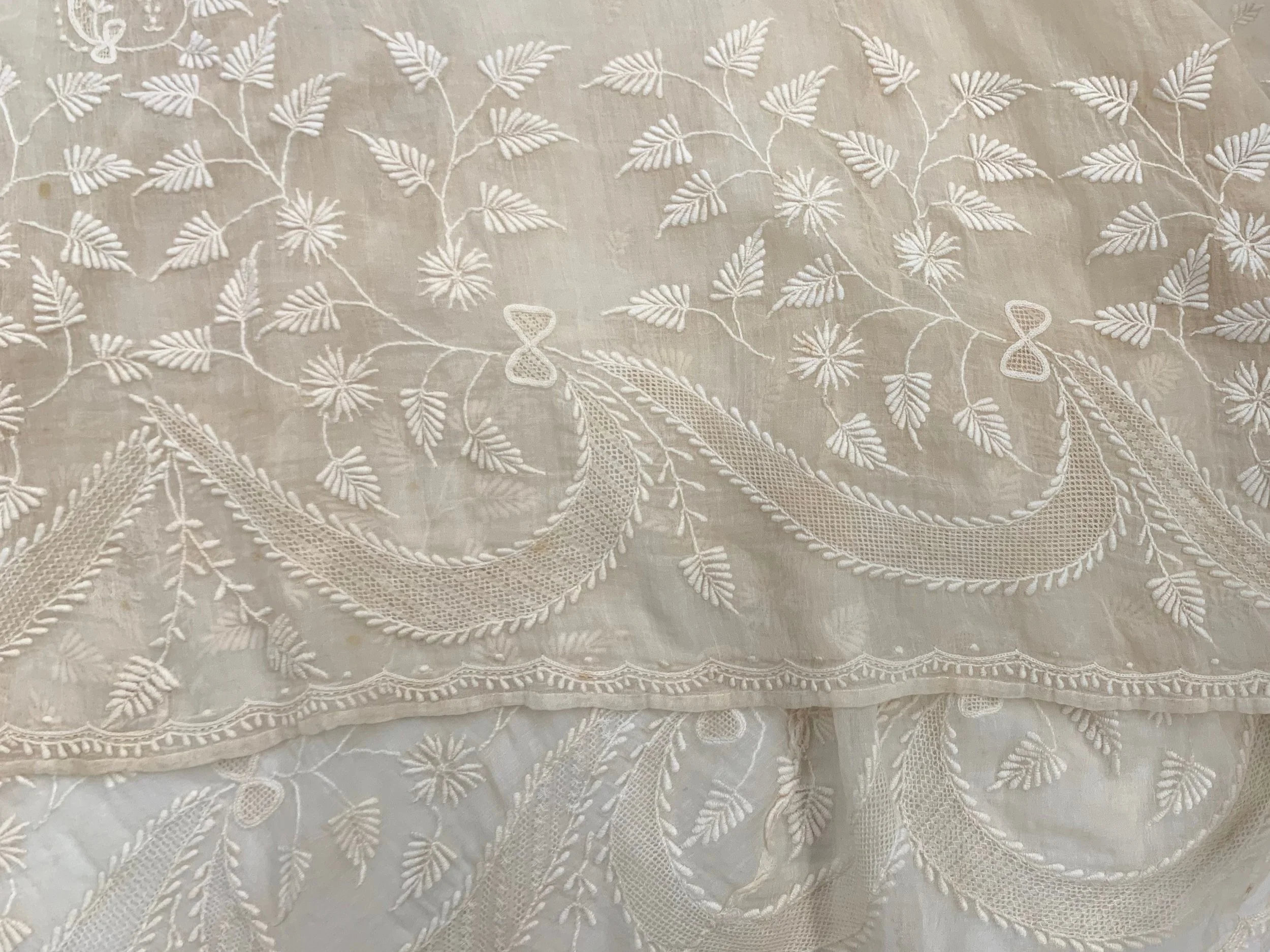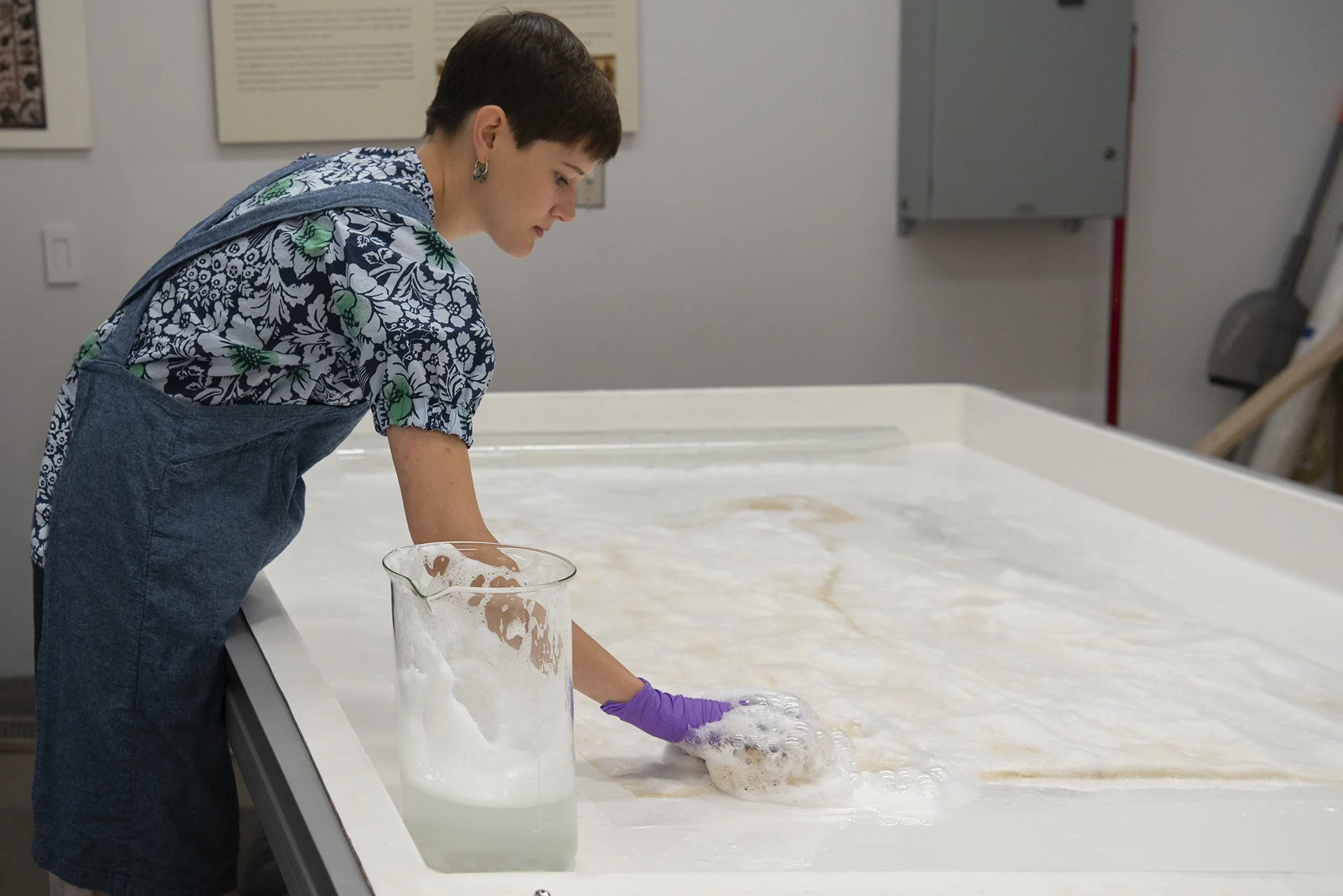
Before treatment
Empire Waist Dress
America
1800-1810
Philadelphia Museum of Art
Cotton
This is a semi-sheer plain weave cotton gown with short sleeves, raised “empire” waist, and short train. The long skirt falls smoothly on the front and is gathered at the center back. The gown is decorated overall with whitework and drawn thread embroidery.
Condition Before Treatment
The dress was in fair aesthetic condition and good structural condition. The plain weave cotton is prone to snagging and tears. There were three tears on the back of the bodice and two tears or split seams on the skirt. The cotton was yellowed overall, with more significant yellowing on the back of the bodice and the sleeves.
Bathing and Bleaching
In preparation for the dress’ display, it was deemed necessary to reduce the overall yellowing, and the dress was deemed strong enough to undergo a reducing bleach treatment. Reducing bleach, as opposed to household bleach, is a safer and more permanent method for reversing yellowing in cellulosic textiles.
THe dress was first bathed with a 1% (w/v) Orvus and 1% (w/v) EDTA solution to remove acidic and yellowing degradation products prior to bleaching. The dress was then bleached using sodium borohydride for 35 minutes.
After treatment
Condition After Treatment
The dress’ structural and aesthetic condition are greatly improved. All tears were invisibly mended using nylon bobbinet and hair silk. The washing and bleaching significantly reduced the yellowing, making the dress more similar to its intended white appearance. Colorimetry was conducted before and after bathing. The Delta E values were greatest in the bodice and sleeves and were as high as 53, demonstrating huge reductions in yellowing and overall lightening.
Images courtesy and copyright of the Philadelphia Museum of Art



